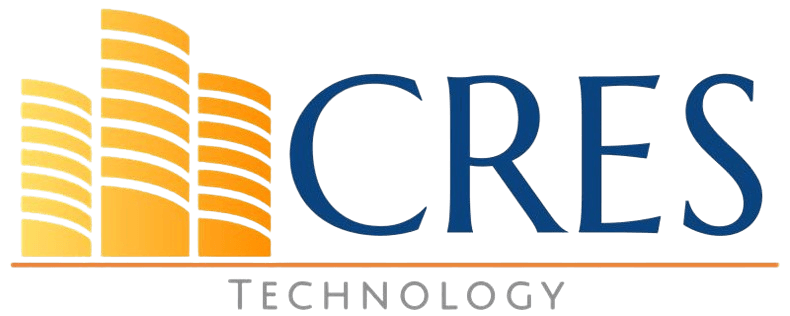
According to Diffusion of Innovation theory, a society adopts technology step-by-step. First, there are a group of people who try the newest trends. They are called innovators, followed by the early and late majorities. The last to adopt technology are called laggards. If we look at cloud computing, companies are at different stages of adoption. But one thing is for sure; eventually, businesses would have to shift to the cloud. In this article, we’d see why businesses and real estate companies specifically consider on-premise to cloud migration.
The silver lining in Cloud Computing
First, let’s look at Cloud Computing and SaaS as they are interconnected. Cloud Computing encompasses three components, including SaaS (Software as a Service), PaaS (Platform as a Service), and IaaS (Infrastructure as a Service). For example, Microsoft 365 or Google Workspace are SaaS, Azure Windows Servers fall in the PaaS category, while both AWS and Microsoft Azure also offers IaaS.
What is SaaS?
SaaS or Software as a Service is software that doesn’t run on your local infrastructure or premises. The application is run on a web browser and is located in the cloud. So you see that SaaS is a component of Cloud-based computing. In an ideal situation, you can use SaaS products. The alternative is to host your applications and systems on Microsoft Azure or Amazon AWS servers.
On-premise to cloud migration for applications
The traditional way for implementing and maintaining systems has been On-Premises or On-prem software. An example may be applications such as SAP, Oracle, Dynamics CRM, or MRI Software installed on servers at the business’ own locations. Although many of these systems are also available on a subscription basis. You may also host these systems on Azure or AWS cloud-based virtual servers.
Now let’s see the factors compelling businesses in general and real estate companies specifically to migrate to the cloud or SaaS.
1. Globalization led to the Cloud
Businesses have become global with their human resources working across different time zones and geographical locations. On-Prem software wouldn’t be a good pick because you need to deploy across multiple locations.
2. Scalability and Flexibility
On-prem systems have scalability limitations. As businesses grow, their scale of operations grows with them. Scaling through On-Prem software is not going to be a brilliant solution. You need more licenses to use On-Prem software at different locations, plus the infrastructure costs.
3. On-Prem is more expensive than SaaS
As compared to SaaS and Cloud Applications, On-Prem is expensive. Installation and learning the software add to the costs. Although Cloud and SaaS have monthly fees, On-Prem is costly in the long run.
4. More secure
On-Prem software requires VPN or Virtual Private Network to operate. VPNs are prone to cyber threats. Cloud and SaaS are more secure as they have more resources to keep them safe from intruders and hackers.
5. Don’t lose your precious data.
If the server crashes, valuable time is wasted until it is restored. You may lose precious data as well. Cloud and SaaS have servers at strategically located data centers that save your day! So if a server crashes at one location, an alternative setup can provide the service uninterrupted.
6. Cloud gives you 24/7 Access.
The biggest boon of Cloud and SaaS applications is their 24/7, anywhere-anytime access. You need to be present at the location to use On-Premises Applications or use a clunky VPN. Cloud offers on-the-go access so you can keep working from anywhere using any device.
7. Pay for what you use.
Another blessing of Cloud-base systems is that you can pay according to your usage, such as Amazon Web Service, which is metered as a pay-as-you-go method. This slashes the cost significantly compared to the on-prem software, where you need to purchase the software plus incur the hardware and maintenance cost.
8. Defending the Cloud – Cyber Security as a Service
Most organizations are in danger of becoming a victim of cyber security attacks. They need the type of IT security which could help prevent attacks from ever happening, and also help them recover if an attack did happen. To ensure this you need to implement state-of-the-art Endpoint Detection & Response solutions, allowing your company to recover from any kind of damage caused by cybercriminals. To protect your network and cloud resources against viruses, malware, or even ransomware, cloud-based remote Cyber-Security-as-a-Service can help you.
How we can help
As an experienced IT services provider, CRES can help you easily migrate your on-premise or hosted Exchange Email and Windows File Servers to Microsoft 365 cloud. We can also help you migrate your on-prem systems to Microsoft Azure or AWS-hosted cloud infrastructure.

We offer IT services for small and mid-size companies to help them gain a competitive edge. With our technology specialization and business knowledge, we can help you overcome operational and productivity challenges.
Many of our clients struggled with finding experienced IT resources who understood their business, applications, and systems. However, after acquiring our services, their problems disappeared.
Our services are a combination of strategy, remote monitoring, preventative maintenance, hands-on support, and user training. Contact us today for a free analysis of your IT services.
About Waqar Hussain

CRES Technology – Director of IT Services
A technology leader with outstanding knowledge, technical expertise, and a proven track record of leading complex infrastructure projects and managing help desk teams.





